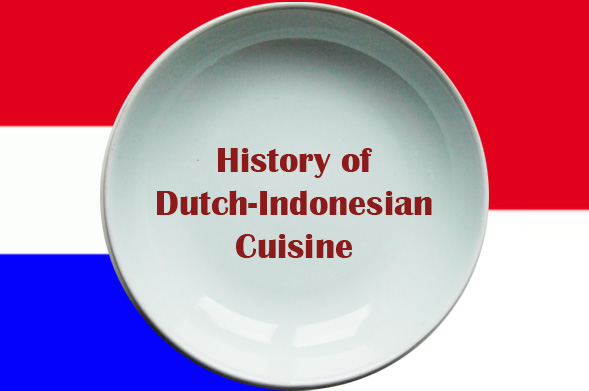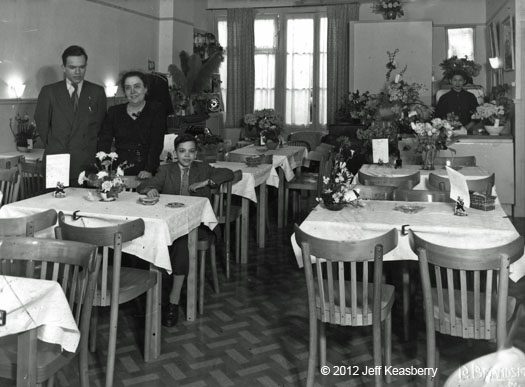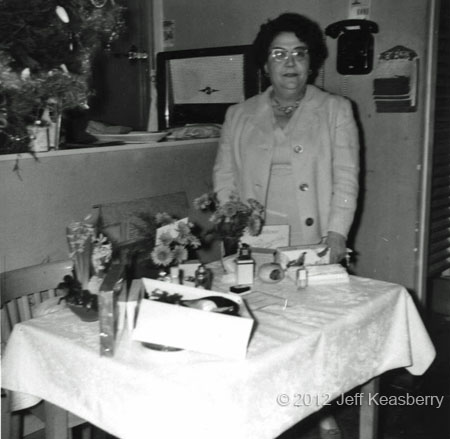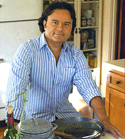Jeff Keasberry
Some people will argue that he Dutch-Indonesian cuisine is the same as or a diluted version of Indonesian cuisine. Can they be blamed? Many people don’t even acknowledge the existence of Indo people, let alone a different cuisine. As a matter of fact, during 350 years of colonial intimacy not only did a mixed race of Indo-Europeans emerge, but also one of the oldest fusion cuisines in the world.

Indo Diaspora and the dissemination of Dutch-Indonesian Cuisine
With the migration of the large group of Dutch Indos to the Netherlands after World War II and independence of Indonesia came also the Dutch-Indonesian cuisine. The Dutch taste and eating habits were forever changed. Nowadays there are clear traces of this influence. The world renowned ‘rijsttafel’ for one is a culinary triumph from our colonial past. Now seen as a native dish, this feast meal is proudly served to foreign guests, as a Dutch treat. The rich and varied cuisine has been exposed to both Eastern and Western influences, combining the best of both continents. Recipes inspired by European or Asian dishes use unique ingredients and cooking styles. Let’s start with the people who brought this cuisine with them from Southeast Asia to the European continent.

Restaurant Djokja in Amsterdam
Photo: private collection Keasberry
It Starts with A Passion for Food
If there’s one thing I learned about Indo people, wherever they are in the world, it’s this unifying identifier that undeniably bonds Indo people beyond borders and signifies our culture: our passion for food! It’s more than a cultural trait, I would say, it’s part of the Indo genetic make-up. We talk about food more than any other topic. A well known trademark of Indo hospitality and a dead give away of Asian roots, is one of the first questions asked to guests when they enter an Indo’s house: “Have you eaten?” For those who are not familiar with this custom, it’s both a greeting and an inquiry into your wellbeing. I always thought of it as this elaborate scheme by the host to win me over by finding a way to my heart through my stomach. Not that there is anything wrong with that. On the contrary, how can you refuse an enticing offer to some good Indo comfort food? I never did. It makes you feel at home right from the start and makes you want to come back for more.
My grandmother and her culinary legacy
I was raised in my grandmother’s restaurant, which was like an extension of our living room and always surrounded by people enjoying Indo food. She introduced Dutch-Indonesian cuisine in Amsterdam in the early 1950’s and published her secret recipes in 1976. She is considered an authority on the subject of classic Dutch-Indonesian cooking in the Netherlands. I succeeded my parents as third generation entrepreneur at age 18. While managing the family restaurant I got even more fascinated by my roots and culture. Coming to the realization that our unique culture would become almost extinct due to, first and second generations leaving us and younger generations losing touch with the culture of their ancestors due to influences of the dominating culture of the country they live in. There is no denying that the Indo people and culture will dilute even further over the coming years due to intermarriage into other cultures. Yet, Indo people may not have their own nation or passport, but they do have their own cuisine.

Jeff Keasberry’s grandmother: Christmas time in her restaurant Djokja
Photo: private collection Keasberry
One of the Oldest Fusion Cuisines
Considered to be one of the oldest fusion cuisines in the world and an expression of the Indo culture, the dishes and flavors are like a reflection of the Indo people, unified by diversity and a fine blend of East and West. Following in the footsteps of my ‘oma’ and as part of my mission to preserve our culinary heritage, I published my own book in March 2012. The book is more than just about the food and passing down secret family recipes from my grandmother and mother. It also pays homage to the loving people who were at the source of this cuisine. It’s about the unique traditions and celebrations. To give the cuisine the recognition it deserves and to put it in the correct historical context, Dutch-Indonesian cuisine should not be confused with Chinese-Indies or Indonesian food which can be found in restaurants throughout the Netherlands. These are separate culinary lineages which had their own evolution.
It also serves as an encouragement and inspiration to cook Indo food and, as with any cuisine unknown to you, it is a joyous adventure to learn the unique traditions and customs around it. After all, the only way to sustain a culture is to live it!
Dutch-Indonesian Cuisine in the United States: The Culinary Heritage and New Inspirations
Outside of the Netherlands, the largest group of people with roots in the former Dutch East Indies can be found in the U.S., most of them in California. Many years after some of my relatives, I too immigrated to this sunny state in 2005. Being away from my mothers’ food, the urge to cook and preserve my culture became even stronger. While doing research for my first book I stumbled upon some interesting facts. I am now working on my second book and also play an active role in documenting the Indo history in the English language as board member of the Indo Project, a non-profit organization based in the U.S. I gladly share some of my findings about the history and the impact of Indo food on our own and other cultures.
© 2012 Jeff Keasberry
About Jeff Keasberry
 Jeff Keasberry is a Los Angeles based entrepreneur and author of the cookbook published in the Netherlands: Indische Keukengeheimen, recepten en verhalen van 3 generaties Keasberry’s (Dutch East Indies Kitchen Secrets, recipes and stories of 3 generations Keasberry’s). He is also boardmember of The Indo Project. On the website of The Indo Project: Jeff was born in Amsterdam in the Netherlands and was raised in the restaurant of his grandmother who brought Dutch-Indonesian cuisine to the capital in the early 1950’s and published her recipes in a cookbook in 1976. He took over the helm of the family business from his parents in 1986 and became a third generation Dutch-Indonesian restaurateur. Over the following 20 years, he accomplished a successful track record in the hospitality industry and supply chain management and held several managerial positions in Business Development. In 2005 he came to the US to join a company specializing in commercial interior design and the production of fine furniture. He established social and business network groups and currently organizes events and serves on several non-profit boards including The Indo Project.
Jeff Keasberry is a Los Angeles based entrepreneur and author of the cookbook published in the Netherlands: Indische Keukengeheimen, recepten en verhalen van 3 generaties Keasberry’s (Dutch East Indies Kitchen Secrets, recipes and stories of 3 generations Keasberry’s). He is also boardmember of The Indo Project. On the website of The Indo Project: Jeff was born in Amsterdam in the Netherlands and was raised in the restaurant of his grandmother who brought Dutch-Indonesian cuisine to the capital in the early 1950’s and published her recipes in a cookbook in 1976. He took over the helm of the family business from his parents in 1986 and became a third generation Dutch-Indonesian restaurateur. Over the following 20 years, he accomplished a successful track record in the hospitality industry and supply chain management and held several managerial positions in Business Development. In 2005 he came to the US to join a company specializing in commercial interior design and the production of fine furniture. He established social and business network groups and currently organizes events and serves on several non-profit boards including The Indo Project.
Internet
http://www.keasberry.com/en/
The Indo Project
Boekbespreking Indische keukengeheimen. Recepten en verhalen van 3 generaties Keasberry’s: www.indischhistorisch.nl
Literature
Jeff Keasberry, Indische keukengeheimen. Recepten en verhalen van 3 generaties Keasberry’s (Dutch East Indies Kitchen Secrets, recipes and stories of 3 generations Keasberry’s).

Hi, my name is Sachiko. I’m doing research on the influence of the Dutch on Indonesian cooking. I found your website very useful. My research is for my a History project. I would really appreciate it if you could give me any more links in reference to the above subject.
Thank you and regards,
Sachiko
Hello, I am an Indonesian postgraduate student and I plan to do my dissertation in Anthropology about Indonesian diasporic food in the Netherlands. I found this blog entry very useful for my research, and I would like to use the book “Indische Keukengeheimen” as one of the primary resources for my research. However, I am not a Dutch speaker, so I am looking for information on whether this book is available in English. Thank you very much.
Sincerely,
Arum Primasty